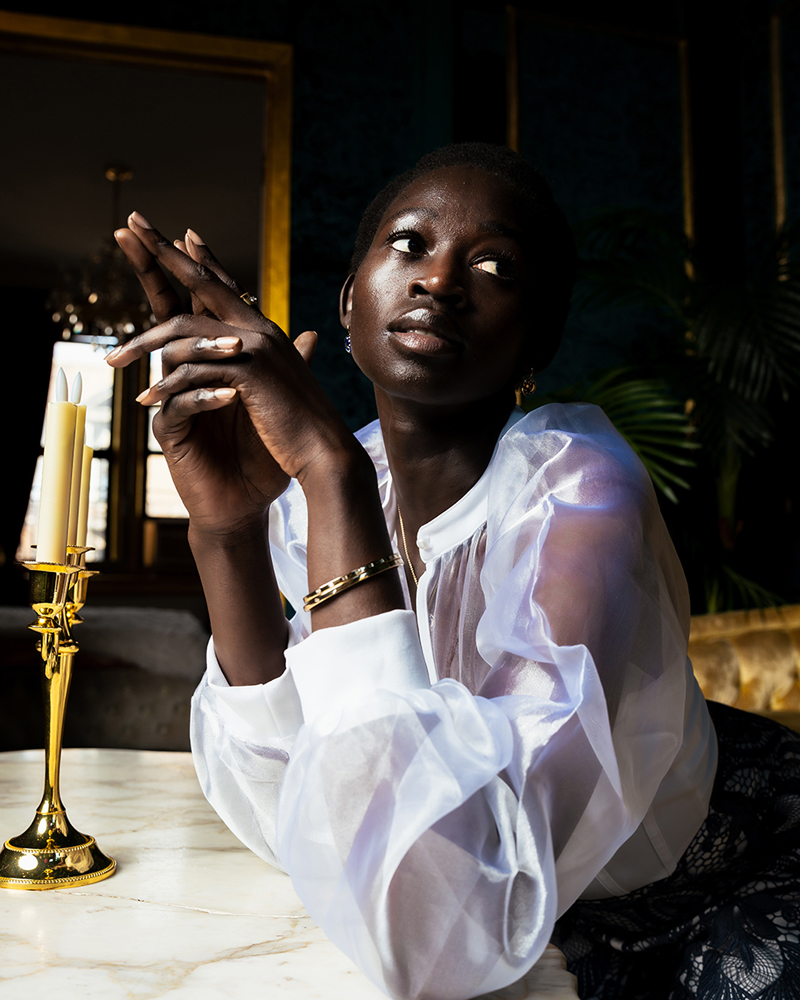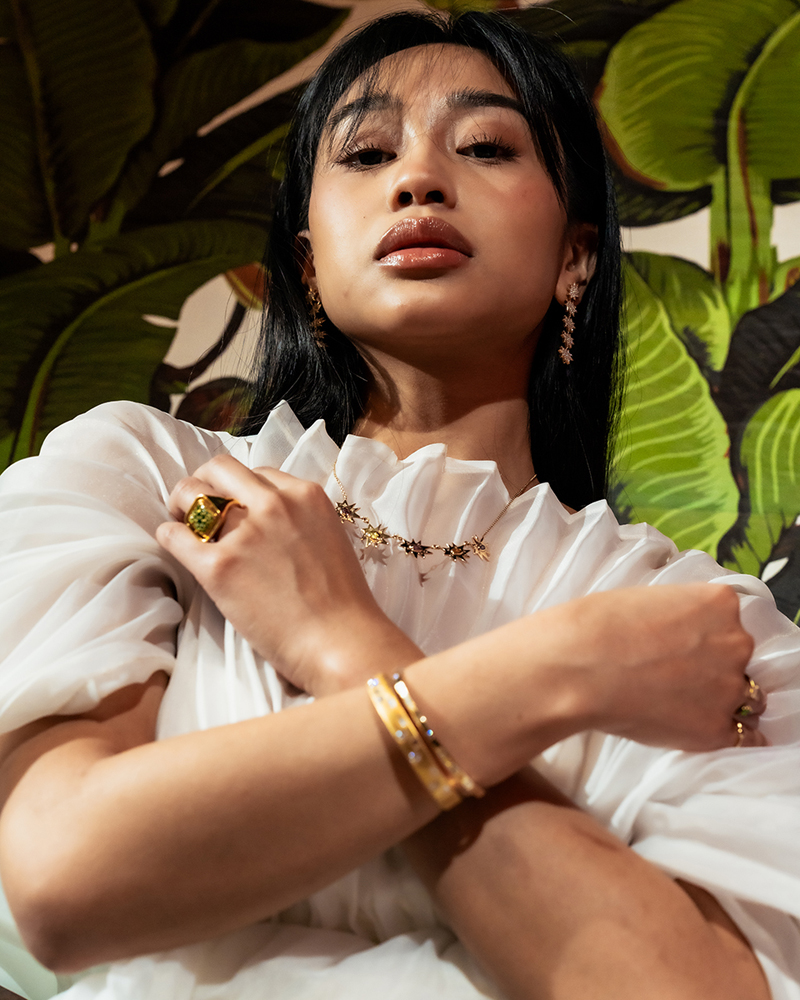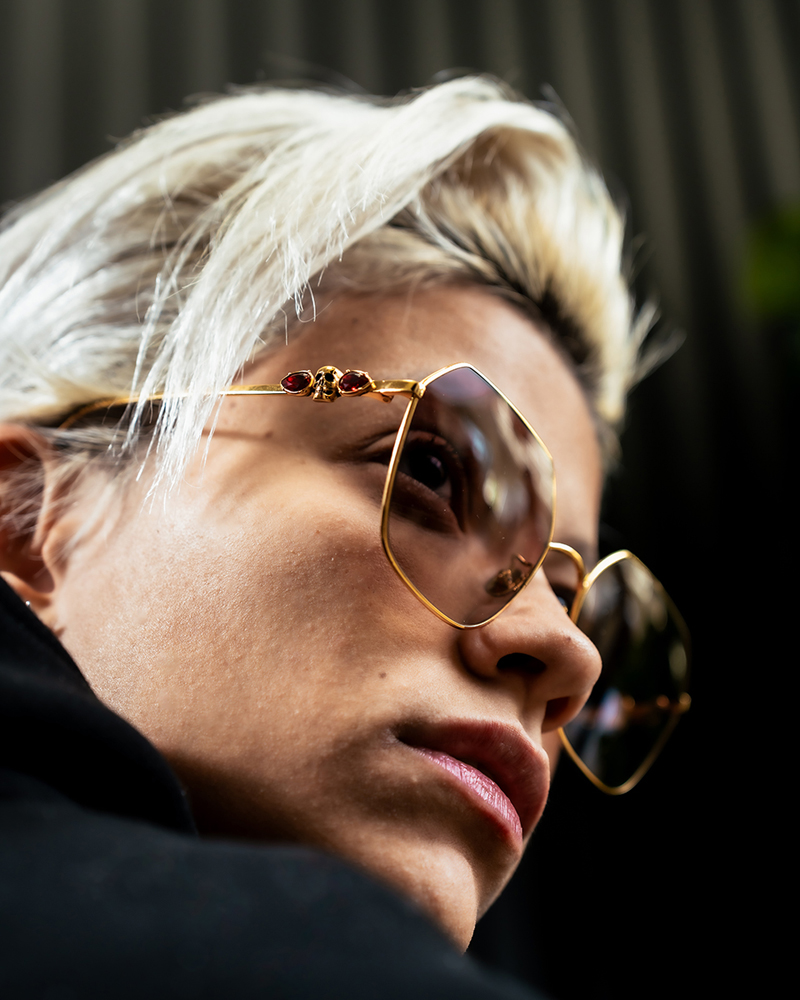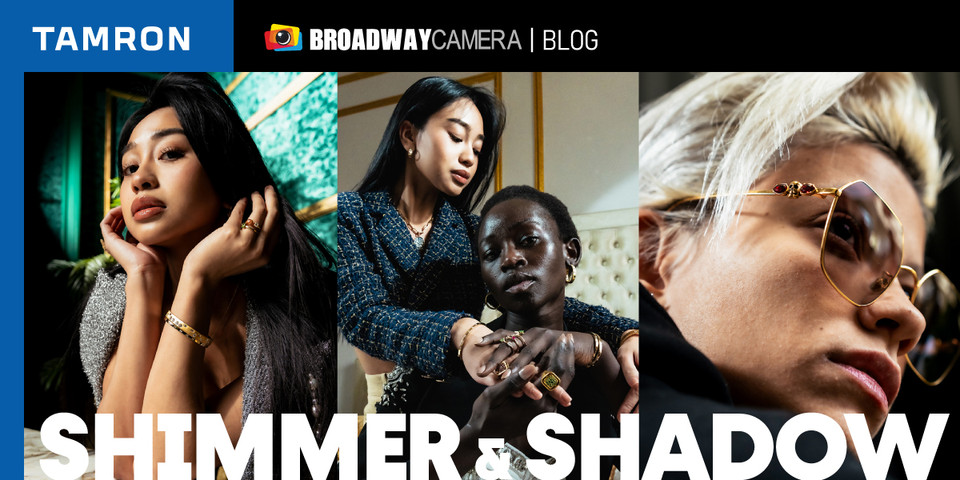Ricky Shoebio shoots for the yin and yang in his jewelry and accessory portraits with the Tamron 28-75mm F2.8 G2 zoom.
By Jenn Gidman. Images by Ricky Shoebio
Whether his models are singing onstage or strolling in the street, Ricky Shoebio is a master at forging a connection between subject and viewer in his portraits. Add in jewelry and accessories, and the New York–based photographer and creative director’s fashion sense is activated, requiring a more nuanced approach that highlights the products at hand while still drawing in the viewer via the conduit of the models posing in front his camera.
“For this type of photography, I’ve been experimenting lately with a style that touches on the yin and yang of things, especially when it comes to lighting,” Ricky says. “I don’t want to shy away from the shadows, for instance—I want rich, dark blacks in my photos, but also quality highlights to balance everything out.”
To capture his jewelry- and accessory-themed portraits, Ricky uses the Tamron 28-75mm F/2.8 Di III VXD G2 fast standard zoom lens. “I love this lens, both for the versatility of its focal length and for its speed,” he says. “If I want to crop and have more of a macro feel, I can do that. Or, I can step back and do more of a lifestyle, editorial, or couture shoot, showing my model from head to toe. With this kind of photography at zoomed-in focal lengths, you want to maintain the integrity of your subject without too much compression that might warp your model’s face. This lens delivers on that front, with sharp images each time. The 28-75mm G2’s F2.8 is also the perfect aperture, allowing me to create the separation and depth of field I desire.”
RICKY’S QUICK TIPS
Keep your eye on backgrounds and accent colors.
These both help in what I call “world building.” Sometimes you’ll want the background to be more of a character in that world, like in the photo here of the model with the green restaurant wall behind her. Look closely and you’ll see that one of her rings features a green stone, which plays off the green in the wall. The gold jewelry also complements the gold bands on the wall behind her.

28-75mm (28mm), F5, 1/160 sec., ISO 50
In the photo of the model with the candelabra on the table, shot in the same restaurant with the same green wall behind her, I wanted a natural separation from her beautiful darker skin, so we styled her in white. I purposely kept the background darker in this case so I wouldn’t distract from her at all. You can see the gold accents coming in throughout—the gold candelabra, the gold couch in the background, and, of course, her gold jewelry.

28-75mm (28mm), F4.5, 1/200 sec., ISO 80
Select angles strategically.
You can make your subject seem delicate and unassuming, or powerful and larger than life, all by tweaking the angle you use. In the photo of the model with the ruffled white shirt, I wanted her to exude a bit more strength than she had in some of the other images. I also didn’t want her competing with other textures in the background. That’s why I opted for a lower perspective, shooting up at her, to show a little more fierceness.

28-75mm (57mm), F5, 1/200 sec., ISO 5000
Don’t shy away from unconventional poses.
With this type of photography, you may have to do a bit more directing, because you want to make sure your models are posed in ways that accentuate the clothing, jewelry, or accessories they’re showing off—whether it’s slightly shifting an arm to emphasize a bracelet or tilting a model’s head to make sure the light hits her eyeglasses the right way.

28-75mm (62mm), F2.8, 1/200 sec., ISO 250
In the photo of the woman wearing those dramatic eyeglasses, I love this pose that we hit on, with her head tilted back. It seems so natural in a way, like a kid who’s not paying attention in class—it’s got some attitude backed in. And the way she’s positioned, her piercing eyes draw you right in.

28-75mm (39mm), F3.2, 1/200 sec., ISO 250
Strive for balance, especially when using multiple models in one photo.
You always want a manageable interaction, and to show that yin and yang I talked about earlier. Carefully consider the dynamic between your subjects and the roles you’d like them to assume before you start taking pictures, so you can make sure they complement each other without overwhelming each other.
In the photo of the two models here, I wanted the lead model in front to be more serious, with the secondary model appearing a little more relaxed and approachable. As people, we’re multifaceted, and approaching your photography like that ensures harmony in your images.
To see more of Ricky Shoebio’s work, check it out here or on his Instagram.


